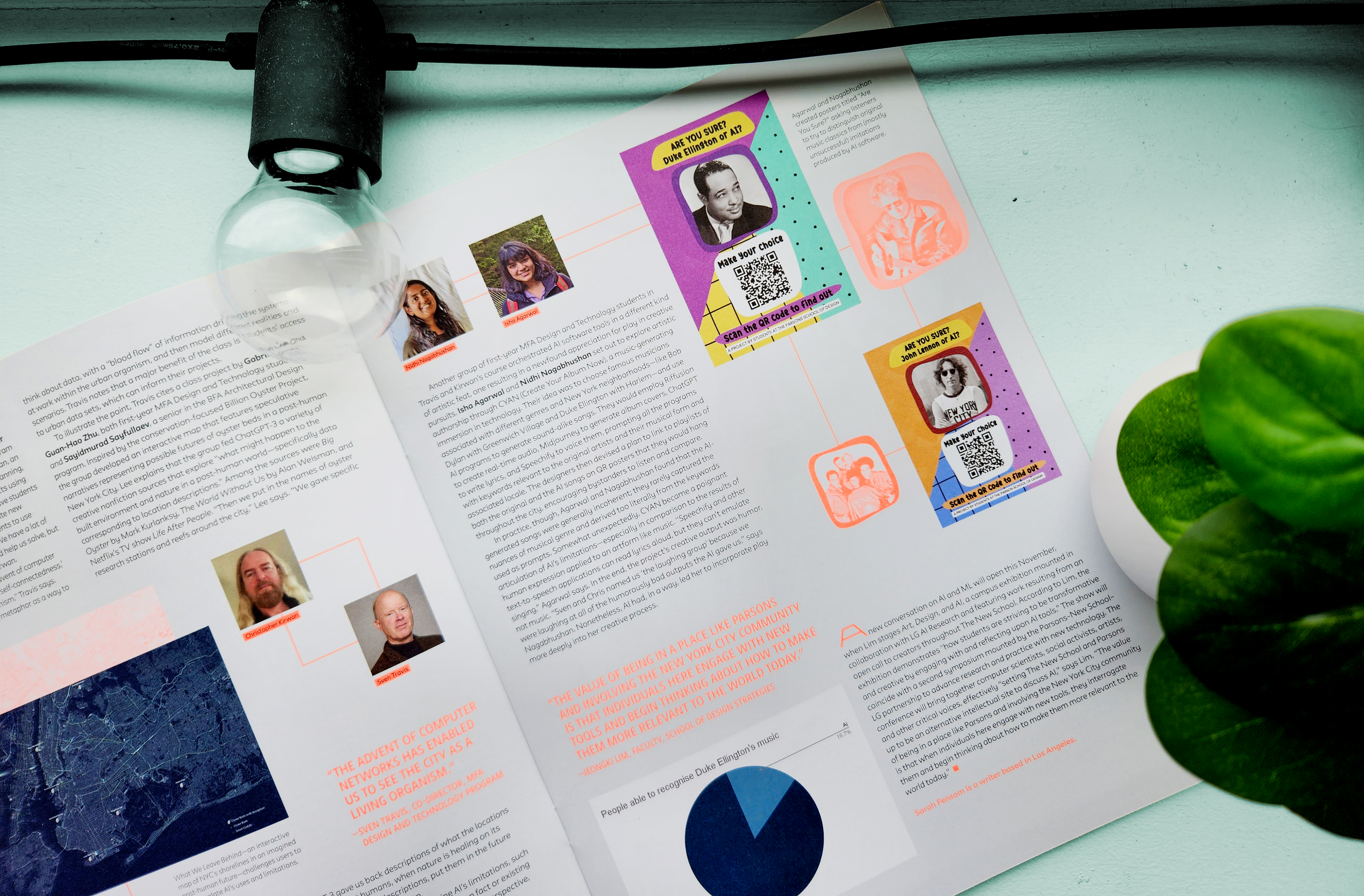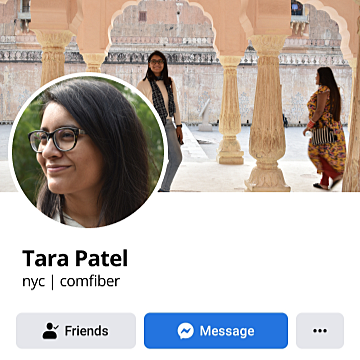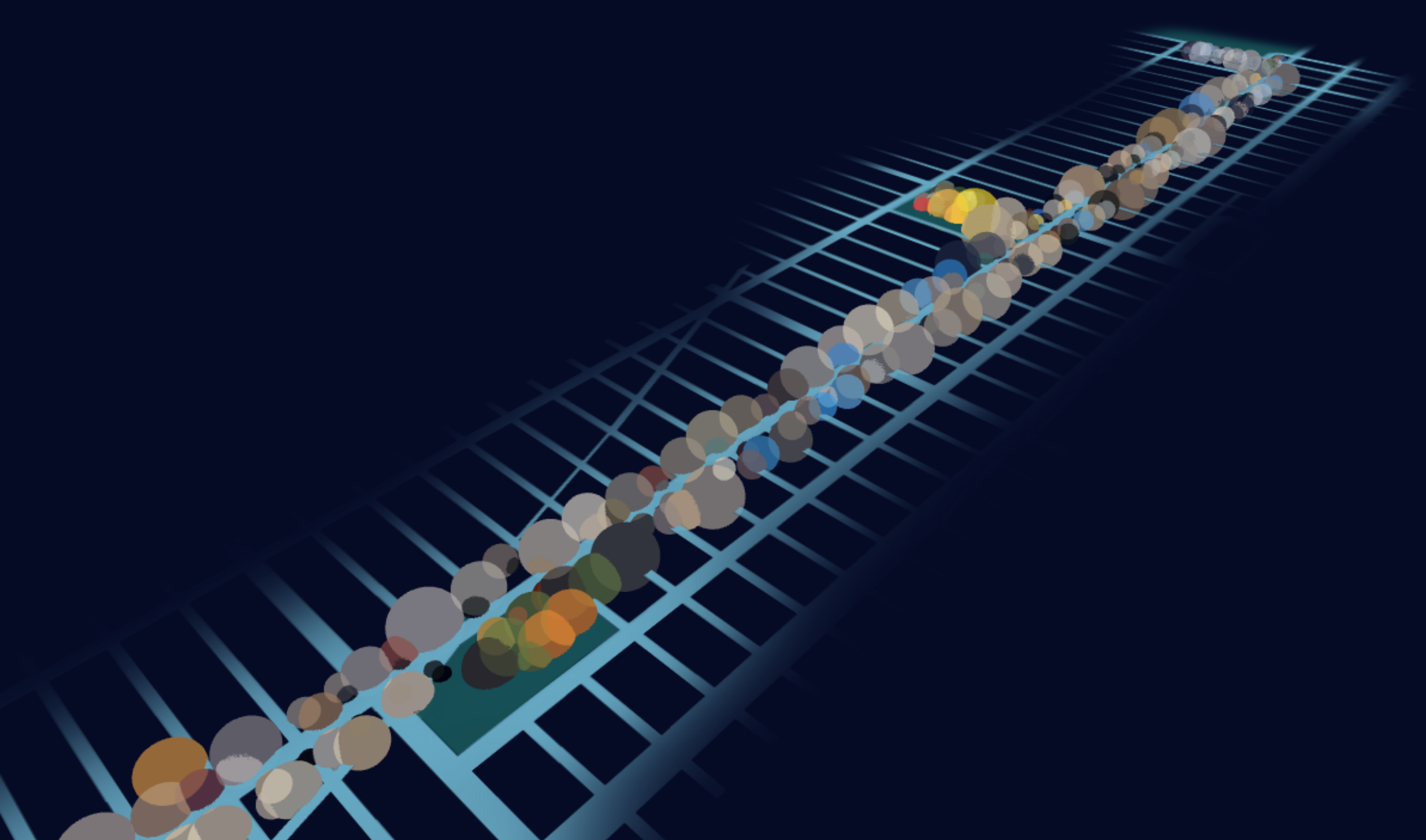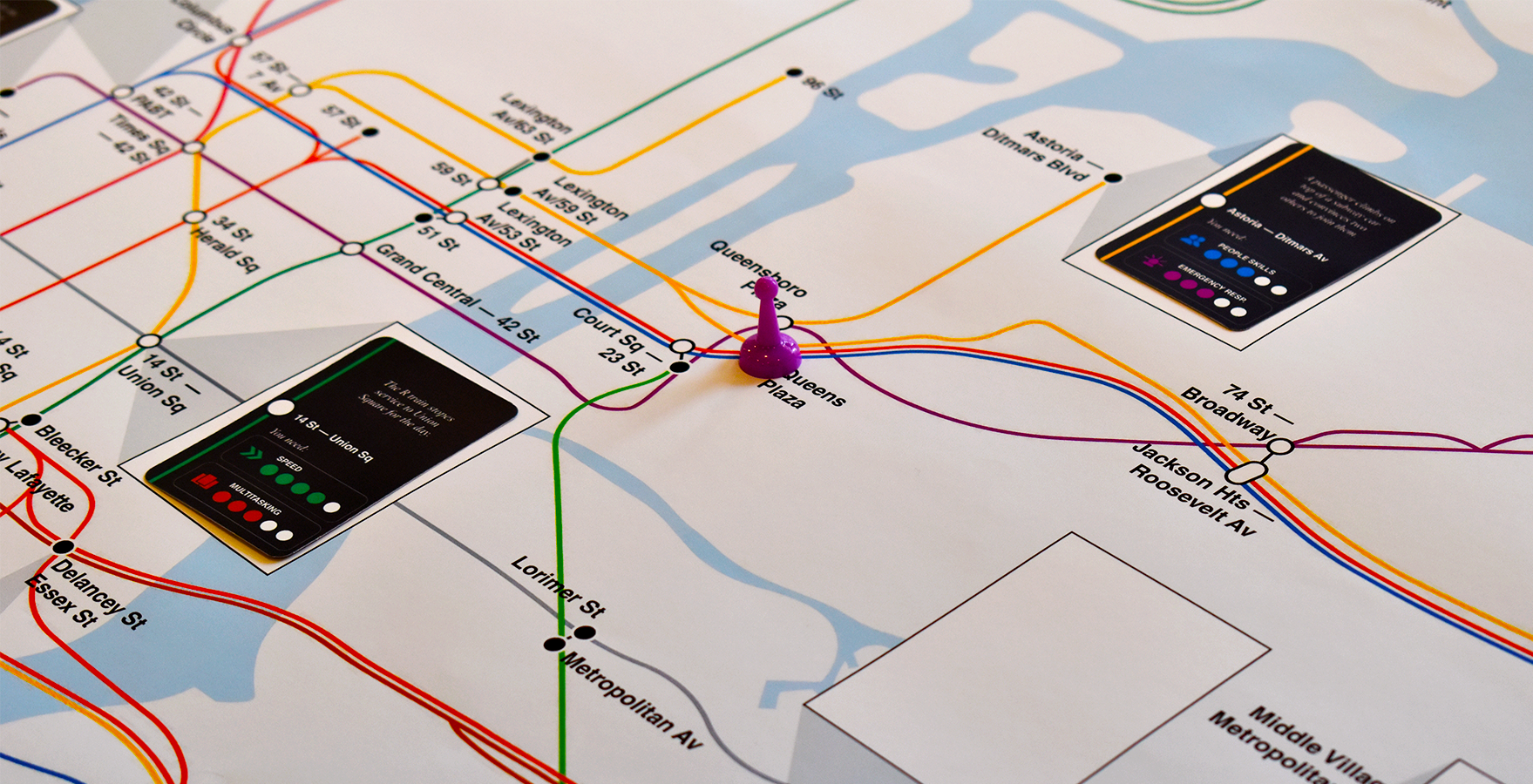
Invisible New Yorkers
GAME DESIGN | This project was my final thesis for MFA in Design and Technology at the Parsons School of Design. A collaborative tabletop game that explores the intersection of multiple ideas within a city: New York, urban fabrics, and people.
The Goal
To create a collaborative experience that increases awareness and appreciation for the people who make the city function, and helps foster a sense of community and connection between audience and people.
The Timeline
August 2023-May 2024.
The Process
Conceptualisation, ideation, research, interviews, game design, making, prototyping, playtesting, iteration, experience design, presentation.
Conceptualisation
This project lies at the intersection of multiple broader ideas:
New York City. The city is a rich tapestry of ideas, interconnected layers, and communities, and carries a lot of potential for exploration. This project aims to explore perceptions of the city based on individual experiences, how everyone’s perception includes/excludes different aspects and viewpoints based on what they engage with; specifically with:
Urban fabrics. The city is made up of multiple layers; of systems that connect with each other. This project explores these systems and how people engage with them, specifically in the context of:
People. The city, systems, or structures do not function without people. There are multiple communities of people who make these systems work. This project focuses specifically on the people who actively make these services work, who may or may not go unnoticed; their lives; their experiences.
New York is an ecosystem made up of a complex, interconnected web of urban fabrics. Everyone living in and around New York interacts with different intersection points on this web every day, and hidden within this web are communities of people who work to actually keep these systems running. This thesis aims to translate these structures into an interactive tabletop game that explores the complexity of these systems, how we interact with them, and highlights the people who are crucial to keep these systems running.
Prototyping and Playtesting
To translate these systems and this concept into a collaborative tabletop game, I chose to focus on one system in the city that almost everyone uses and interacts with every day: the subway.
The First Prototype
This prototype is a card game that is played by collecting infrastructure and people (from cards in deck one) and using them to deal with events that occur around the subway (described in cards in deck two). Each event solved scores a point, and left unsolved loses a point.
Playtesting
I tested this prototype with multiple groups of people. Some key takeaways included:
The gameplay is very simple and repetitive. It takes a moment for players to get used to how it works, but once they do, it takes very little effort and seems rather simple.
No system can function indefinitely with a finite amount of resources. The characters in the game need to manifest this as well.
In a true collaborative game, the players should have to strategise together to proceed with the game. There need to be more mechanisms for interaction — between players, between characters, between characters and elements of gameplay.
Adding an actual board based off of a map of New York might bring in possibilities of including specific idiosyncrasies of individual components of New York City.
Complexity in Gameplay
This prototype is played on a board of select lines of the New York subway. Each turn, players pick up two cards from a deck consisting of character cards (which describe characters and their abilities), infrastructure cards (which provide powerups), and event cards (which describe situations happening across the subway system). Players use life points denoted by red squares to track their characters’ energy levels. Players deal with event cards by matching the statistics described in the event and the collection of statistics present in their system.
Playtesting
People responded to this prototype in different ways:
The game seems a little skewed. The gameplay overall seems predisposed to let players win — perhaps not highlighting the actual stakes of the system.
Since everything comes from the same deck, it leaves the distribution up to chance, and there could be (and have been) situations where players receive only players or only events.
The map feels underutilised right now — there is potential to make it better reflect the behaviours and performances of the New York subway system.
The stakes for the game can be higher — what happens when you lose a card? How many turns does it take to beat a card, or to win the game?
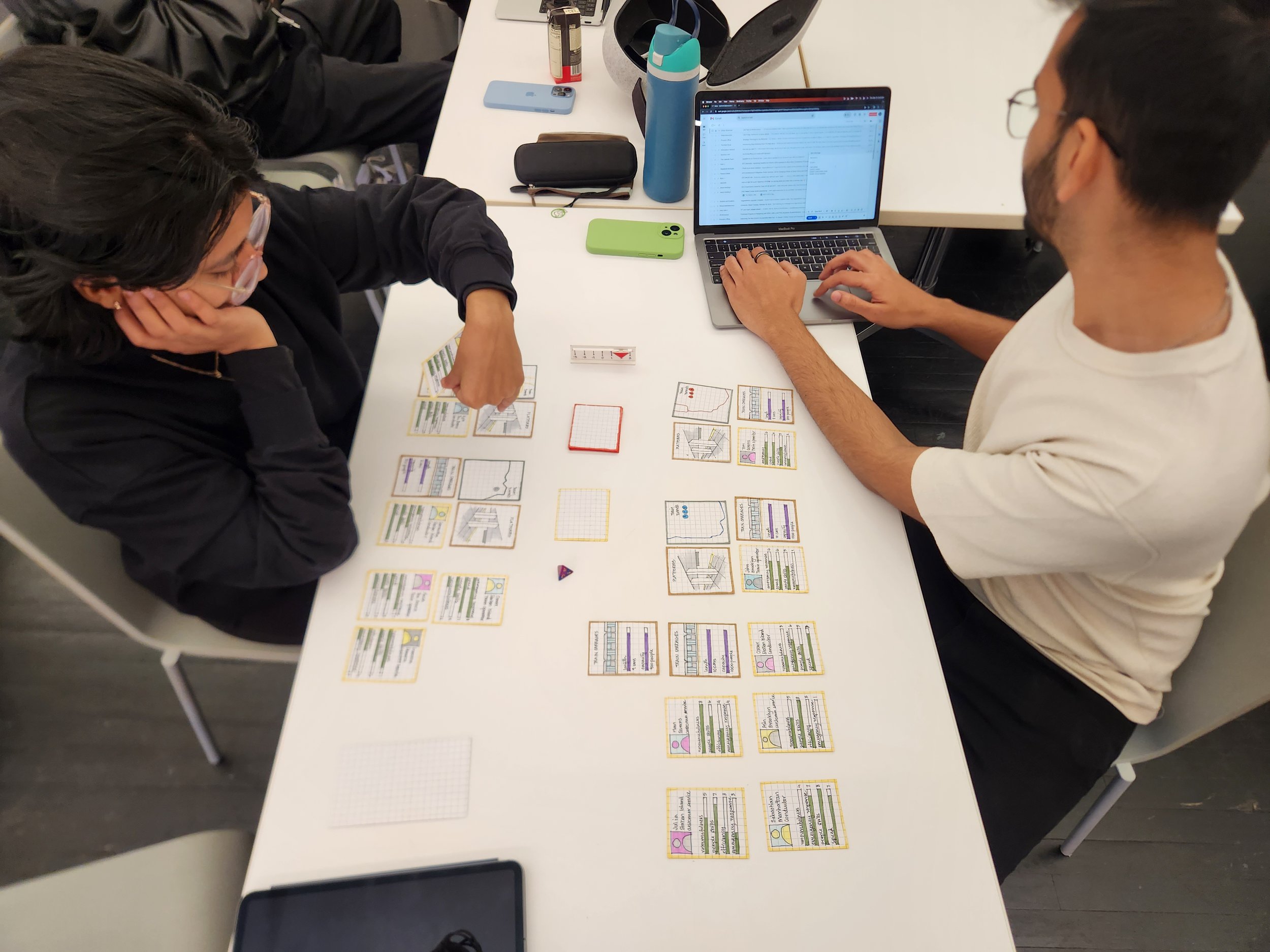
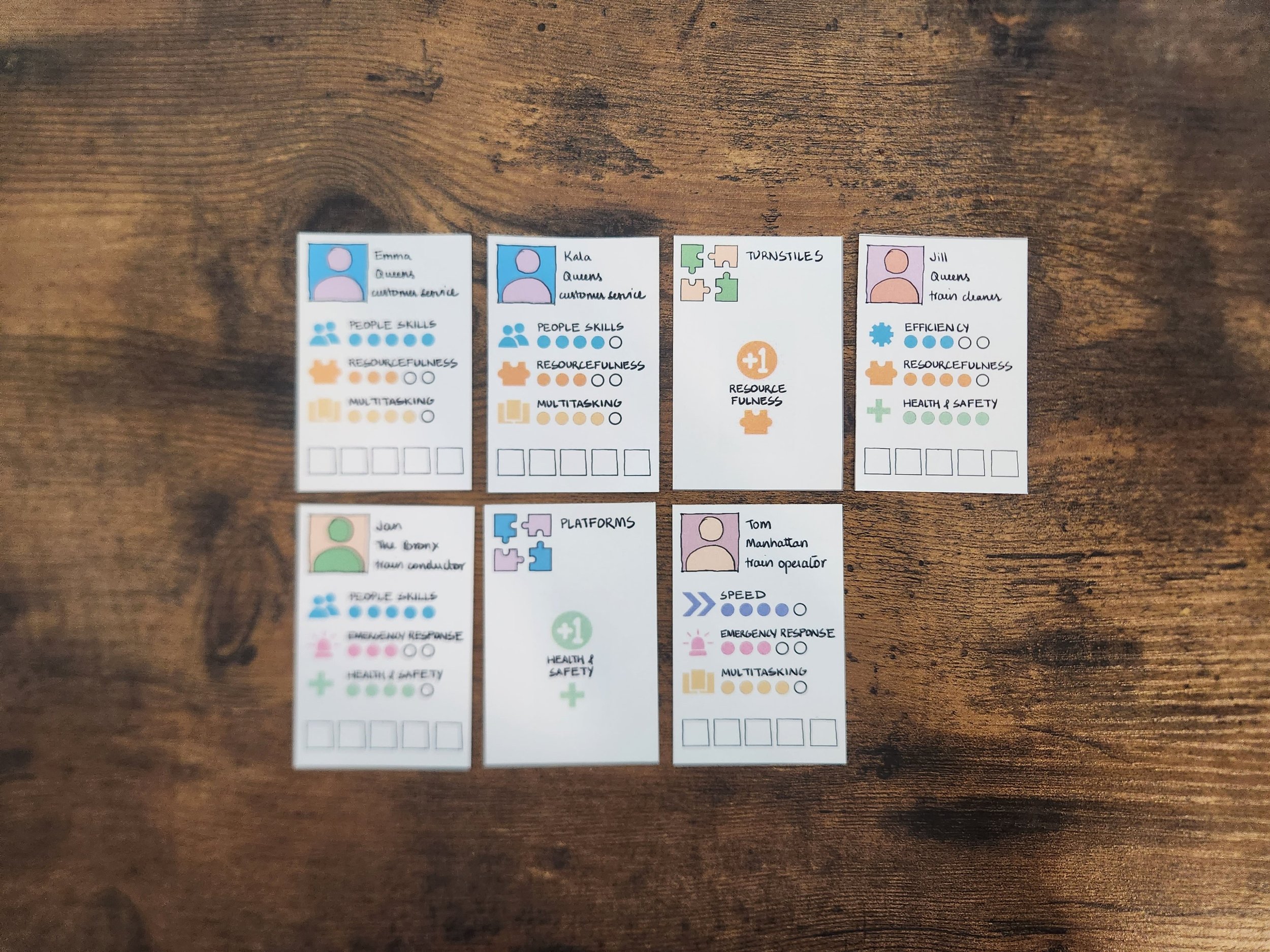
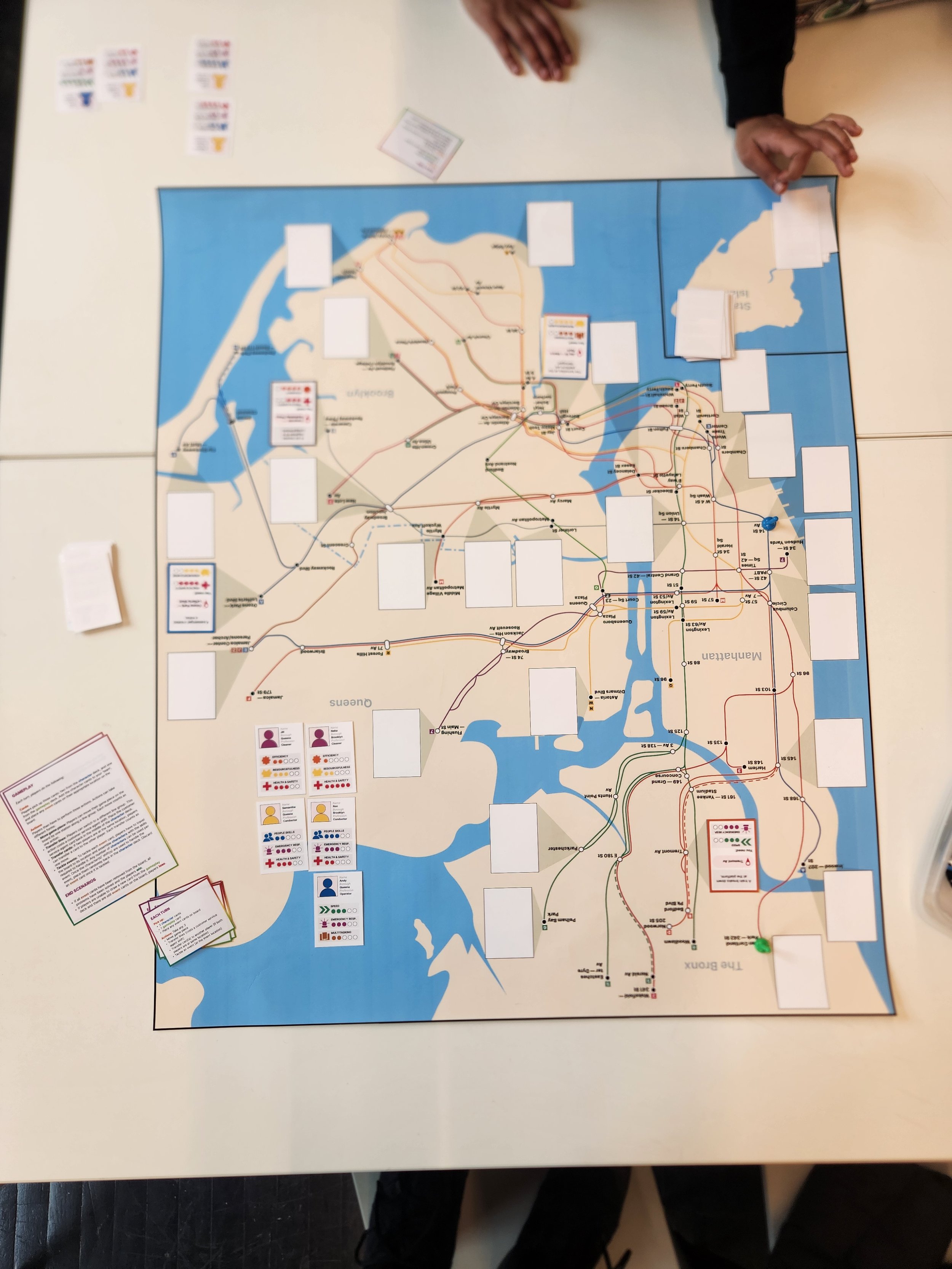

The Final Game
The aim of the game is to run and operate a subway system in New York City for the length of the game. The game is collaborative, so all players strategise and work together to run the subway. Players win or lose together, as a team. Players play as managers of the subway, and solve problems by moving through the board.
The Board
The game consists of a board that describes different train lines in New York City and selected playable stations. Players can move through these lines with their game pieces.
The Cards
There are four kinds of cards, divided into three decks.
Character cards: Character cards describe one shift of different characters, as well as their skills and abilities. There are four kinds of characters — train operators, train conductors, customer service agents, and train cleaners. These characters and their abilities are based on people I interviewed in the subway system.
Event cards: Part of the gameplay deck, these cards describe different scenarios that could happen in your subway system. Each card also outlines the skills required to handle it. These are based on actual events in the subway.
Gameplay cards: These cards detail in-game actions that can speed up or slow down gameplay. These cards go in the gameplay deck with event cards.
Transfer cards: These cards give players different instructions in the event that they want to transfer train lines.
The Play
Each turn, players pick up three cards: two from the character deck, and one from the gameplay deck. Character cards are added to ‘teams’, and any event cards are placed on their appropriate location on the board.
Players then have three moves to perform. Moves can take different forms:
Moving game piece: Players can move their game piece on the board by one station along a line group.
Transferring lines: Players can switch to a different line group. To transfer lines, players have to pick up a card from the transfer deck and follow its instructions.
Tackling events: To tackle each event card, players have to travel the board to its location and assemble characters with the skills required to handle it.
Winning (or Losing)
If all event cards have been removed from the board, all problems have been solved and the players win! If players are unable to draw a new card from the gameplay deck and there are still event cards on the board, players lose.
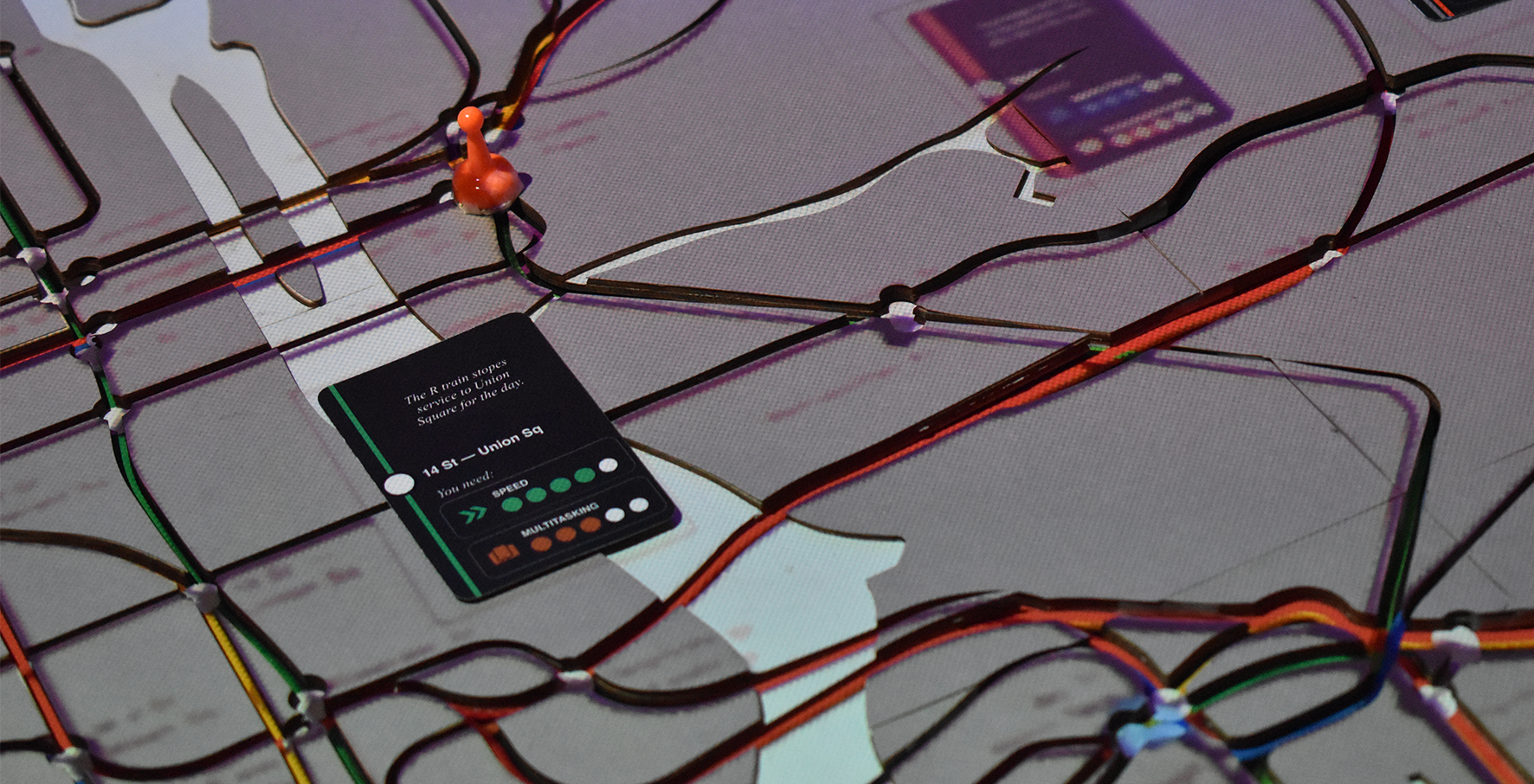
MORE PROJECTS









